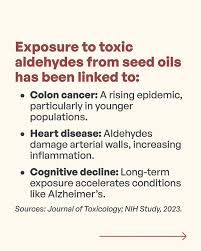
In a world where convenience often outweighs safety, the food industry continues to add substances to our meals and snacks that, while legal, may have unknown or harmful health impacts.
Foods that people consume on a daily basis have been proven to be a leading factor to many health issues.
Dariush Mozaffarian, director of the Food is Medicine Institute at Tufts University, said, “As a result of the FDA’s policy, the food industry has been free to ‘self-GRAS’ substances they wish to add to foods, without notifying FDA or the public,” as quoted by NPR.org.
‘Self-GRAS’ is when companies add their own additives due to a loophole in an FDA ruling. The ruling was originally intended to allow manufacturers of common ingredients like vinegar and table salt that add to processed foods to bypass the FDA’s lengthy safety-review process.
But over time, companies have found that it’s more efficient to take advantage of the ruling to get their products on shelves quicker and cheaper.
“There are now hundreds, if not thousands, of substances added to our foods for which the true safety data are unknown to independent scientists, the government, and the public, ” NPR.com states in an article about harmful additives in food.
One such ingredient under criticism is potassium bromate, a chemical used in baked goods and drinks to improve texture. Although banned in several countries, including Europe, Canada, China, and Japan, potassium bromate remains prevalent in food products in the U.S.
Despite evidence linking it to cancer, the FDA has yet to take significant action. This is just one of the many harmful additives that have been allowed under the ‘Self-GRAS’ ruling.
Another harmful additive that is in almost every commercial food product is seed oils. Seed oils, specifically those that are highly processed, are considered harmful due to their high omega-6 fatty acid content, which can lead to inflammation and obesity, and their tendency to oxidize and form toxic byproducts when heated.
“Seed oils were never meant to be consumed, they were originally invented to grease machinery. I think that speaks volumes about why it shouldn’t be consumed,” Janek Wielezynski, Co- Owner of Worthingtons La Chatelaine restaurant, said.
“Seed oils are like poison to the human body. They cause many issues like obesity and also contribute to sun burns and sun cancer because they make your skin oily and allow the sun to burn it easily,” Wielezynski continued.
The majority of fast food restaurants use these harmful ingredients, yet they are still very successful with business. “The availability and affordability of fast food is one of the main causes of obesity. Fast food restaurants are often overflowing in urban areas, making it convenient and easy to consume fast food regularly,” senior Maya Remsteen, a CCP English student working on an essay about the harmful effects of fast food, said.
Yet, the dangers don’t stop there. According to NBC News, the rise of plastics in packaging has introduced another insidious threat: microplastics. These tiny fragments of plastic, which can come from packaging, water bottles, or even the food itself, are now present in the environment.
Plastics have been linked to a variety of health problems, including hormonal imbalances, infertility, and developmental issues. These chemicals leach into food, air, and water, exposing consumers to potential long-term damage without their knowledge.
According to the U.S. Environmental Protection Agency, packaging alone accounted for over 82 million tons of municipal solid waste in 2018, or nearly 30% of total waste generation. Much of this packaging is made from plastic, which is cheap to produce and requires far less energy to manufacture than alternatives like glass.
“You have to view plastics from an environmental standpoint as well as a nutritional one, biomagnification affects the food chain significantly and it is super concerning,” junior Roxana Uddin said.
Biomagnification occurs when a substance, such as pesticides or plastics, enters the food chain and cannot be easily broken down or excreted by organisms.
Uddin expressed why she cares about the topic by exclaiming, “I have always been interested in the environment because it affects my generation and future one.”
Sciencedirect.com states that at just 170°C, plastic melts at a much lower temperature compared to glass, which requires heat up to 1600°C. This makes plastic not only cost-effective but evidently easy to mass-produce and use in food containers, despite the harmful chemicals it may contain.
According to foodnavigator.com, “When plastic food containers on shipping boats are exposed to sunlight, they can release harmful chemicals, potentially contaminating the food and posing health risks.”
The impact of microplastics in the environment is alarming; but the truth is, these particles have already entered consumers bodies. According to Adventhealth.com, new studies suggest that microplastics can accumulate in organs and tissues, causing potential long-term health risks.
According to the National Institute of Health, these risks include inflammation, cardiovascular disease, respiratory issues, endocrine disruption, neurological effects and more.
Researchers have even found these particles in the food and water people consume on a daily basis and even the air needed to breathe. With the average person potentially ingesting dozens of microplastics daily, it’s no surprise that scientists are concerned about the links to cancer, infertility, and hormonal disruption.
While the FDA claims to be monitoring these dangers, the reality is far more concerning. Without proper oversight and regulation, chemicals like BPA, phthalates, and potassium bromate continue to slip under the radar, impacting public health according to CBS News and Consumer Reports.
Furthermore, the widespread use of plastics in food packaging means that even the most innocent-seeming items on the grocery store shelf could be contributing to the growing exposure to toxic chemicals.
As people continue to debate the future of food safety, one thing remains clear, the responsibility to protect public health lies not just with consumers, but with the food industry and regulatory bodies.
Until more stringent measures are taken, the dangers of microplastics and harmful additives will continue to quietly lurk in our meals, disrupting our health in ways we may not fully understand
Westerville Central Junior, Ethan Dick who has been concerned about this issue for years stated, “I always follow what health professionals are saying and recommending for consumption, since it’s so difficult to keep up on this stuff. I also try my best to avoid fast food restaurants because they use so many bad ingredients.”








